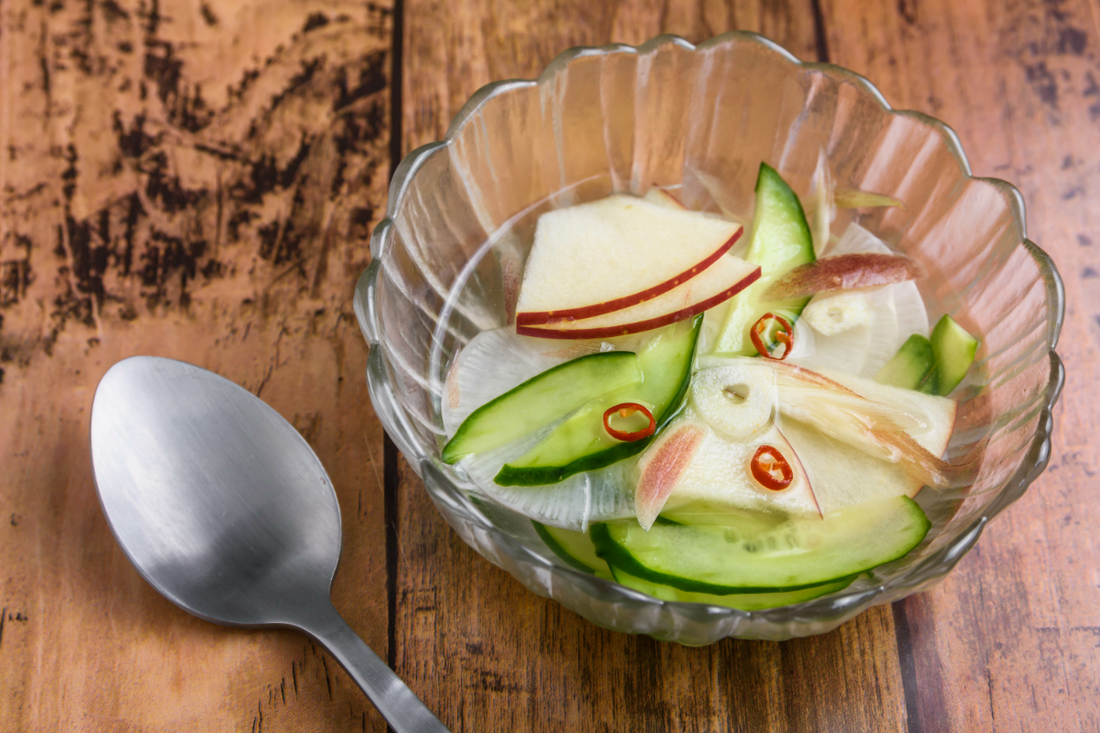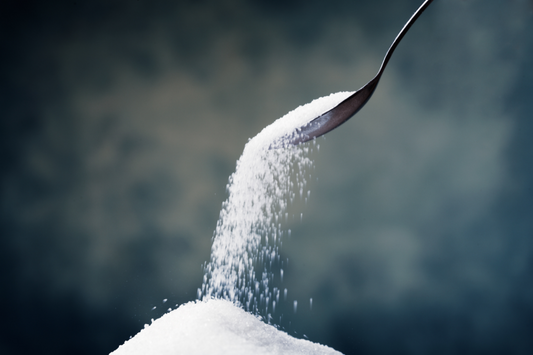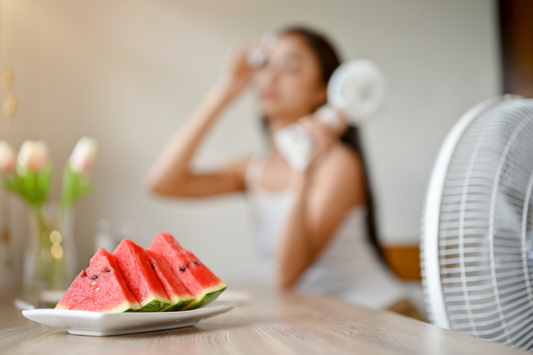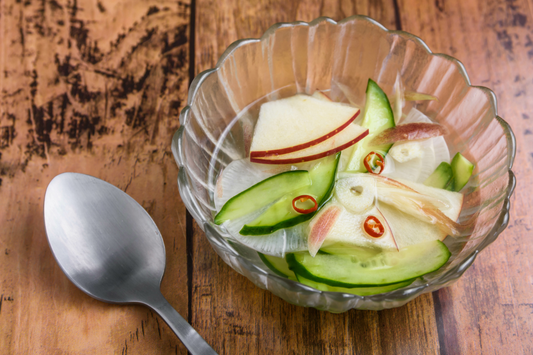Fermented foods are once again attracting attention
Ever since the word "intestinal activity" became a hot topic, many health foods and fermented foods have been introduced. New foods are being developed, and foods that were only eaten in certain regions have become a hot topic all over the country.
Among the many fermented foods, ``water kimchi'' has become a hot topic due to the recent popularity of Korean culture and Korean dramas.
Korean gourmet food is always a hot topic, with towns like Shin-Okubo popping up all over the country, but today I'd like to introduce you to water kimchi that you can easily enjoy at home.
What is water kimchi?When you think of kimchi, you may imagine something bright red and stimulating, but water kimchi is kimchi that is soaked in pickling sauce and looks like a pickle, so it may feel more like a salad.
Unlike regular kimchi, which is not aged for months, it is fermented and ready to eat within 1 to 2 days. Why not incorporate water kimchi into your intestinal health, which is easy to make and good for your intestinal health?

This water kimchi is amazing!
Among pickled fermented foods, rice bran pickles are typical, but water kimchi is characterized by its high content of lactic acid bacteria. It's easy to make, so the good thing about it is that you can't make mistakes.
Of course, water kimchi is delicious with vegetables such as radish, cabbage, and carrots, but above all, the main ingredient of water kimchi is the pickled juice rather than the pickled ingredients. Taste the fermented pickle juice and take in all the lactic acid bacteria. It is also recommended to use it as a soup or seasoning.
It is referred to as a drinkable serum by people who have felt that their physical condition has improved due to its intestinal regulating effects.
In addition to being rich in lactic acid bacteria, seasonal vegetables full of vitamins are perfect for your intestinal health.
You can make it not only with summer vegetables such as cucumbers and tomatoes, but also with fruits such as watermelon, apples, and pears. If you are making it with sweet ingredients, fermentation will proceed with the fructose that is naturally present, so try omitting or reducing the amount of kestose to get the flavor you like.
material
<Basic pickling soup >
The quantity is easy to make.
・Rice soup…2 cups
・Kombu (approximately 5 x 5 cm)…1 piece
・Garlic…1 clove
・Ginger…1/2 piece
・Vinegar…1 teaspoon
・Lemon juice…1 teaspoon
・Salt…1 teaspoon
・Kestose…about 10g (3 to 5 bags)
*You can also use your favorite oligosaccharide.
<Ingredients>
vegetables of your choice
How to make
1. Cut the ingredients into bite-sized pieces and sprinkle with salt.
Crush the garlic and cut the ginger into strips.
2. Put the rice water and kelp in a pot, bring to a boil, turn off the heat, and remove the kelp.
3. Once it has cooled down, add the other ingredients for the dipping sauce and mix gently.
4. Transfer to an airtight storage container or storage bag and add the ingredients.
Leave it at room temperature out of direct sunlight for about a day, and once it has fermented, cool it in the refrigerator and it's done.
If you see bubbles, it's a sign of fermentation.
It's easy to make, but the key is to make sure it doesn't contain any bacteria. Use a clean storage container and avoid opening the lid as much as possible until it's finished.
If you like, you can add chili pepper to give it a spicy flavor, which is also recommended as a snack with alcohol.
It contains plenty of kestose, so please enjoy it with the pickling juice.
It's also great for an easy summer somen lunch, with the ingredients as toppings and the dipping sauce added to the noodle soup.

Lactic acid bacteria die when heated, so it is recommended that you do not heat them, but even if lactic acid bacteria are not alive, they can be expected to have health effects such as regulating the intestines, lowering blood pressure, and lowering cholesterol.
What on earth is kestose used in the water kimchi recipe?
Kestose may not be very familiar to your daily diet. Even if you have never heard of kestose, you may have heard of oligosaccharides.
Kestose is a type of fructooligosaccharide and is a highly safe carbohydrate that is found in small amounts in vegetables and fruits that we consume on a daily basis, such as onions, asparagus, and rye.
After ingesting it orally, it is transported to the intestines without being digested in the stomach, so it serves as a nutritional source for beneficial bacteria such as bifidobacteria in the intestines. It is said to be a prebiotic food that can be expected to have a high effect on ``intestinal activity'' that balances the intestinal flora (intestinal environment).
Prebiotic foods are foods that serve as food for good bacteria and increase the number of good bacteria.
In fact, oligosaccharides other than kestose can also serve as food for bacteria that are not good for the body, called bad bacteria. This means that bad bacteria will also grow. However, Kestose has the effect of changing the intestinal environment where bad bacteria cannot be active and increasing only good bacteria.
summary
It's getting hotter and we're starting to lose our appetite, but slightly sour water kimchi is perfect for the hot summer months. It may also be a good option for preventing summer fatigue.
Please try various types of water kimchi using Kestose at home.


![[Monthly subscription] Kestose (3g x 30 sachets) Intestinal environment prebiotic oligosaccharide](http://aidaya.shop/cdn/shop/files/11_84177fe6-a9b2-436e-9d65-c2e970fa88c1.png?v=1756813170&width=533)
![[Monthly subscription] Kestose (3g x 30 sachets) x 2 sets Intestinal environment prebiotic oligosaccharide [Free shipping]](http://aidaya.shop/cdn/shop/files/12_b0502f55-0a97-4613-b661-389adc8bddf7.png?v=1756813168&width=533)
![[Monthly subscription] Kestose (3g x 30 sachets) x 3 sets Intestinal environment prebiotic oligosaccharide [Free shipping]](http://aidaya.shop/cdn/shop/files/13_a64c499a-e4be-4527-8cf5-204f1f8e5895.png?v=1756813169&width=533)
![[Monthly subscription] Kestose (3g x 30 sachets) x 4 sets Intestinal environment prebiotic oligosaccharide [Free shipping]](http://aidaya.shop/cdn/shop/files/14_20a70cb9-ee50-4648-8d8c-12db833b463e.png?v=1756813166&width=533)


